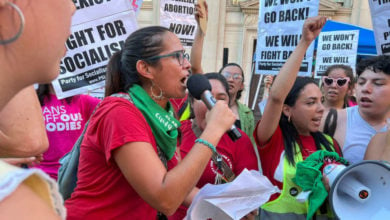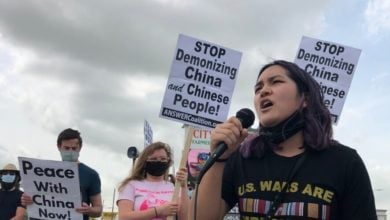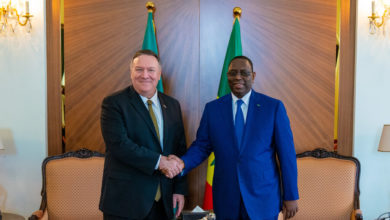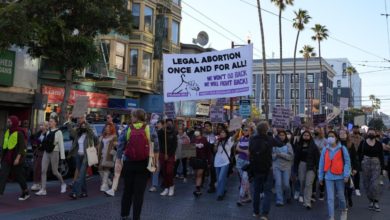A year has passed since the United States was forced to end its 20-year occupation and withdraw its troops from Afghanistan. In that time, the mainstream media and the U.S. government built a false and cynical narrative that the terrible conditions facing Afghan women under the Taliban government are due to the absence of American troops. U.S. politicians, journalists and media pundits claim it is the two-decade U.S.-NATO occupation that protected the rights and interests of Afghan women.
For example, on July 28, Secretary of State Anthony Blinkin proclaimed that the U.S. government will “do all that we can to support progress for Afghan women, girls and other at-risk populations.” And an Aug. 12 article in the New York Times headlined “Taliban Rewind the Clock: ‘A Woman Is a Helpless and Powerless Creature,” credited past gains made by Afghan women to “an American-led occupation and nation-building effort.”
It is true that the return of the rule of the Taliban — an Islamic fundamentalist formation — has meant significant restrictions on the rights of girls and women in many spheres. Bans have been imposed on education, work, clothing, travel, entertainment and more. Women’s employment levels have dropped drastically since last year.
However, a close look at Afghanistan’s history reveals the U.S. government’s claim to women’s rights is a farce. Washington funded the destruction of the Saur revolution in 1992, the only formation which made major gains for Afghan women. To do so, the United States financed and trained anti-woman, anti-Saur fundamentalists. Some from this imperialist-empowered reactionary sector later became the Taliban. In fact, the rise of the Taliban to power in today’s Afghanistan is a direct consequence of U.S. intervention in the country between 1979 and 2021.
Women and children are hardest hit in wars. Yet, Pentagon interference has kept Afghanistan in a state of war since the 1980s, a war made even more deadly and disruptive by 20 years of U.S military occupation. Unable to form a base in the population, U.S. soldiers were forced out last year. Washington then moved its war on Afghanistan and its people to the economic arena. By freezing billions in Afghani assets, the U.S. has caused mass hunger in this poor and hard-hit country.
Washington’s ‘concern’ hides more attacks
This is not the first time that the U.S. government has claimed “concern” for Afghan women while planning or carrying actions that would harm them. Former U.S. President George W. Bush last year criticized the U.S. withdrawal saying he fears Afghan women and girls will “suffer unspeakable harm.” It was the Bush administration that sold the October 2001 U.S. invasion of Afghanistan to the population here using both the 9/11 attack and the liberation of Afghan women as justifications. In November 2001, after two months of bombing, the New York Times editorial even called the emancipation of women a “collateral benefit” of the war.
Casualties of the U.S. occupation
Perhaps common sense evades proud imperialists like Bush. The everyday reality of women forced to live under decades of war and a foreign occupation would call into question the extent of their “freedom.”
For the next 20 years, Afghan women suffered under the U.S. occupation. By conservative figures, the war killed over 250,000 people, but 350,000 more people are projected to have been killed by indirect causes. Majority of the civilian deaths were caused by the foreign occupying forces. Just between 2015 and 2019, over 26,000 Afghan children were killed in the war. Over 2.2 million Afghans became refugees, and many were internally displaced.
The Saur Revolution that expanded women’s rights
“Liberating” Muslim women has become a rallying cry for the U.S. government in its quest to dominate Central Asia and the Middle East. For decades, western media has reproduced the lie that Muslim-majority countries are inherently misogynistic. This could not be further from the truth. As Afghan history shows, progressive governments that act to improve the conditions of women are attacked and overthrown by U.S. imperialism.
Afghanistan without the intervention of U.S. imperialism would have meant a drastically different outcome for all Afghans, but particularly its women. Before the 2001 invasion, the United States intervened in the country in 1979 to destroy the Saur Revolution that brought unprecedented gains for women under difficult circumstances in a short period of time.
In 1978, the Saur Revolution — led by the Marxist People’s Democratic Party of Afghanistan — overthrew the reactionary government of Daud Khan. The new government pursued a revolutionary path towards socialism and drew inspiration from the neighboring Soviet Union. Vowing to abolish feudal relations and to carry out a project of national liberation, the PDPA implemented sweeping radical land, education and social reforms — centering the expansion of women’s rights and democratic rights for the population.
On May 10, 1978, in the New Kabul Times, a decree was issued by the revolutionary government that ensured, “equality of rights of women with men in all social, economic, political, cultural and civil aspects.” Not only in words, but in deeds, the Saur Revolution empowered women. The revolution began to break the chains that limited Afghan women to the domestic sphere.
Mass literacy projects were carried out for women and men. Child marriage was abolished. Women could wear what they wanted, including western clothing. Women were employed in significant numbers in the public and private sectors. The country saw a rise in women’s education, faculty in universities and representatives in parliament. Women could become doctors, nurses, lawyers, judges, parliamentarians and more. In a short time, women made up 70 percent of teachers, 50 percent of government workers and 40 percent of doctors. Sixty percent of the professors at Kabul University were women. For the first time in its history, women made up the majority of the students at KU.
Several Afghan women were armed and involved in the Defense of the Revolution popular militia units created to defend the Saur Revolution from the counterrevolutionary backward political and social forces of reaction — who aimed to overthrow the socialist government.
While the Saur government enjoyed popular support in the urban centers, the rural countryside remained under the control of tribal mullahs and feudal landowners who fiercely opposed the radical transformations. The pace at which the reforms were set into motion nationwide coalesced anti-socialist, anti-women reactionary forces that targeted reformers — killing of women in western clothes, PDPA reformers and women social workers in rural areas.
The United States helped strengthen the far-right theocratic forces that were termed the Mujahideen “freedom fighters,” by funding and arming them with billions of dollars against the progressive revolutionary movement and the Saur government. Osama Bin Laden was one of these Mujahideen fighters. Backed by U.S. imperialism, the Mujahideen launched an all-out war on the revolutionary forces. The war killed hundreds of thousands and left millions in exile.
Afghanistan’s proximity to the Soviet Union also made it a geostrategic target for U.S. imperialism that was hell-bent on taking down the socialist power. The revolutionary Afghan government sought the assistance of the Soviet Union to defend the progressive project. The U.S. used the Mujahideen as a weapon against the Soviet Union to draw it into an indirect confrontation.
The Saur government held out till 1992, when the Mujahideen took control, ending the socialist project and reversing the achievements of the revolutionary period. The Taliban — formed by leaders of various Mujahideen groups — took power in 1996 and remained in power until 2001. During this period, the rights of women in Afghanistan were eviscerated.
Just two months after the U.S. invaded Afghanistan in 2001, the Taliban surrendered, ready to disarm. The U.S. rejected the Taliban’s offer and continued to bomb, destroy and occupy Afghanistan for the next twenty years, during which time the Taliban grew stronger, once again taking control of the country. As exposed by the Afghanistan Papers released in 2019, U.S. officials knew that its longest war was an unwinnable war.
Prior to the Saur Revolution, Afghanistan was one of the poorest and most underdeveloped countries in the world. Some 90% of its population was illiterate. By supporting misogynistic forces and seeking an end to the Saur Revolution, the U.S. government interrupted and decimated the aspirations of millions of Afghan women for the expansion of democracy and the advancement of their rights through socialist development. The Saur Revolution was carrying out the battle against illiteracy, social backwardness and colonial underdevelopment.
The U.S. government sought to justify its occupation of a sovereign country as a “nation-building” project. But the real nation-building project involving the democratic participation of millions of Afghan people was the Saur socialist revolution — that was intentionally destroyed by U.S. imperialism. U.S. imperialism has sought to create an Afghanistan in its own image — taking away the sovereignty and self-determination of a people to shape their own present and future.
Undoubtedly, U.S. intervention has set back progress for Afghan women by decades. A nation of people who for over 40 years have been deprived of social and economic development and political independence. U.S. intervention for the last four decades only strengthened the far-right forces in the country, asphyxiating the rise and growth of progressive political formations.
U.S. imperialism is starving Afghanistan
As it exited the country a year ago, the United States imposed sanctions on Afghanistan and froze $9 billion of the assets of the Afghanistan Central Bank — money that belongs to the Afghan people — forcing the economy to crumble and give way to mass unemployment.
The country is being pushed to the brink of starvation. Half of Afghanistan’s population — about 18 million people — today face hunger, and 9 million face famine as a direct result of the U.S. government’s unilateral coercive measures. Thirteen thousand babies in Afghanistan have died this year alone. The sanctions affect the flow of necessities in and out of the country, such as food, fuel and medicines.
While it purports that the sanctions are targeting the Taliban leadership to suffocate it out of its ruling position, the United States is imposing collective punishment on the people of Afghanistan for a political consequence of its own making, resulting from its decisions and actions over the past 40 years. The thousands of sanctions imposed on Russia by the United States and the EU severely restrict its ability to export food, fuel and fertilizer, critically impacting countries like Afghanistan in Central Asia where wheat is a primary staple.
As Afghanistan is being economically strangled, women being the primary family caregivers are burdened immensely. Under pressure of these manufactured conditions, some Afghan families are even resorting to selling their organs, selling their children, child labor and child marriage.
The U.S. ruling class that undersigned the war and occupation refuses to accept any responsibility. The U.S. government must be held legally and morally culpable for this heinous crime.







